Search Results

How Large of a Model Can You Solve with COMSOL®?
Ever wonder how large of a model you can solve in COMSOL Multiphysics®? It depends on memory requirements, model size, and the dimension of your finite element problem.
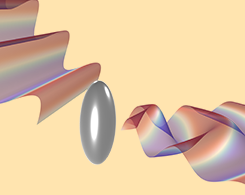
Electromagnetic Scattering in 2D Axisymmetric Models
You can save computational time and memory by performing electromagnetic scattering in 2D axisymmetric models rather than 3D. Learn more here.
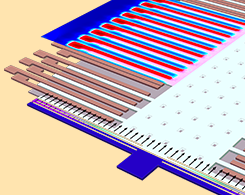
Simulating MEMS Accelerometers and Gyroscopes Used in Inertial Measurement Units
Many autonomous vehicles rely on IMUs for navigation. Here, we show how the MEMS Module can help you model the gyroscopes and accelerometers used in IMUs.
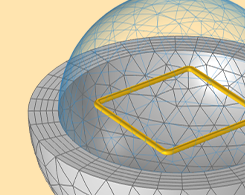
Computing and Using Partial Inductance with COMSOL®
COMSOL Multiphysics® version 6.0 brings new functionality for computing total and partial inductances and AC resistances. Get an overview here.
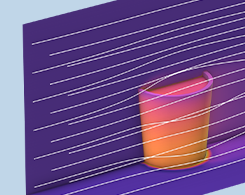
Introduction to Modeling Evaporative Cooling
From meteorology to food processing, evaporation has many industrial and scientific applications. Here, we give an introduction to modeling evaporation with the Heat Transfer Module.
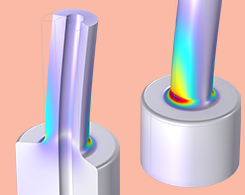
Axisymmetric Solid Mechanics with a Twist
As of version 6.0, you can easily include circumferential displacements in 2D axisymmetric models using the Solid Mechanics interface. Check out one example here.

Modeling Emissivity in Radiative Heat Transfer
In Part 1 of a blog series on modeling radiative heat transfer, we discuss the concept of surface emissivity.
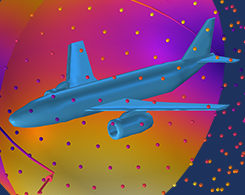
How to Compute the Projected Area of a CAD File in COMSOL®
Learn about three approaches to computing the projected area of a CAD file and when to use each one.
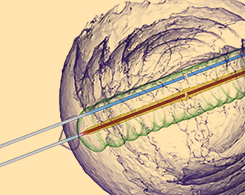
How Long Does It Take an Engineer to Turn on a Light Bulb?
Misconception about electricity: Electrons carry the energy in an electrical circuit. Today, we investigate this theory with simulation.

Modeling the Permeability of Composite Reinforcement Materials
Here, we go over how to model the permeability constant of an idealized composite reinforcement material.
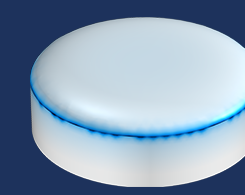
Curve Fitting of Solution Data in COMSOL Multiphysics®
We discuss curve fitting of continuous solution data, the concept of orthogonality, and how to fit solution data to a set of orthogonal functions for a simple and convenient postprocessing operation.
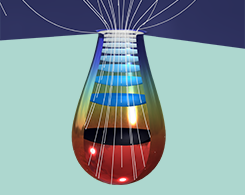
Modeling Pitting Corrosion in COMSOL Multiphysics®
When the process of generalized corrosion is allowed to continue, the initialization of a pit may occur on the metal surface, which is also referred to as the Evans drop experiment.
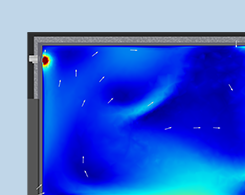
Fine-Tuning an HVAC System Design with Simulation
Do you find your office too hot, too cold, or just right? Using simulation, HVAC system engineers can assess indoor climate conditions and ensure maximum comfort among a building’s occupants.
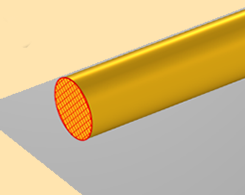
Voltage and Ground When Modeling Wave-Like EM Fields
We continue our discussion of voltage and ground by defining and interpreting these terms for sinusoidally time-varying electromagnetics models.
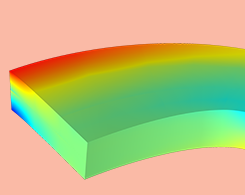
What Is the Difference Between Plane Stress and Plane Strain?
We go over the formulations and constitutive models that you can use to study plane stress, plane strain, and generalized plane strain in your solid mechanics problems.
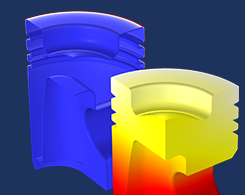
Efficient Meshing Strategies for 3D Inductive Heating Models
Interested in some efficient meshing strategies for 3D inductive heating models? In this blog post, we demonstrate how to partition a mesh based upon the element type.

The Beauty of Vortex Streets
Vortex streets occur quite frequently in nature and are relevant in a variety of technical applications. This fluid mechanics phenomenon can also be quite beautiful to watch!

Modeling a Rapid Detection Test in COMSOL Multiphysics®
Curious about how exactly the rapid detection tests for COVID-19 work? Get a comprehensive explanation here, as well as 3 example models in COMSOL Multiphysics®. (Part 2 of 2)

Modeling Thermomechanical Fatigue in COMSOL Multiphysics®
You can analyze thermomechanical fatigue in COMSOL Multiphysics® using experimental data from fatigue testing and material parameters from literature. A guest blogger demonstrates…
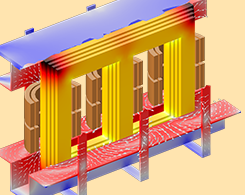
Computing Losses in a Three-Phase Power Transformer
Around the world, power transformers are used in power grids for efficient electric power transmission. EM simulation can be used to compute losses in these devices and optimize their designs.
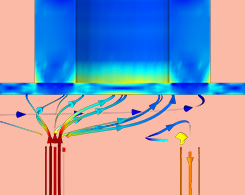
How to Simulate a Piezoelectric Micropump
Learn how to combine piezoelectric materials with fluid-structure interaction effects, use a velocity-dependent formula, and set up disconnected mesh between the solid and fluid domains.
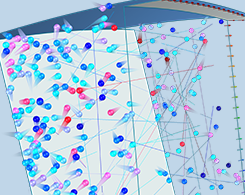
How to Analyze Turbomolecular Pumps with COMSOL Multiphysics®
Modeling gas flow in a turbomolecular pump calls for specialized numerical methods, because at such low pressures, the gas molecules rarely collide with each other.
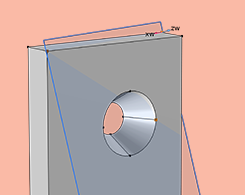
Modeling Parts Without Constraints in Your Structural Analyses
When building a solid mechanics model, there may be parts with prescribed loads but no constraints that can be reasonably applied. Learn different approaches and considerations for this scenario.
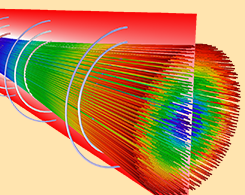
Modeling a Pierce Electron Gun in COMSOL Multiphysics®
Cathode ray tubes, electron microscopes, spectrometers, and particle accelerators: These devices and components commonly use Pierce electron guns.
